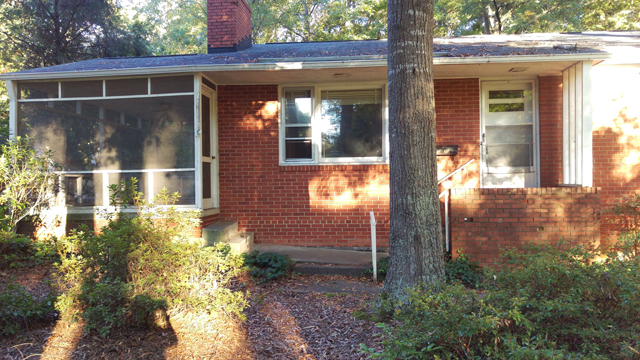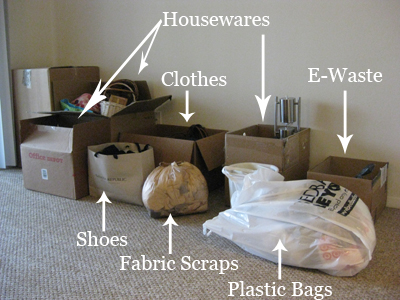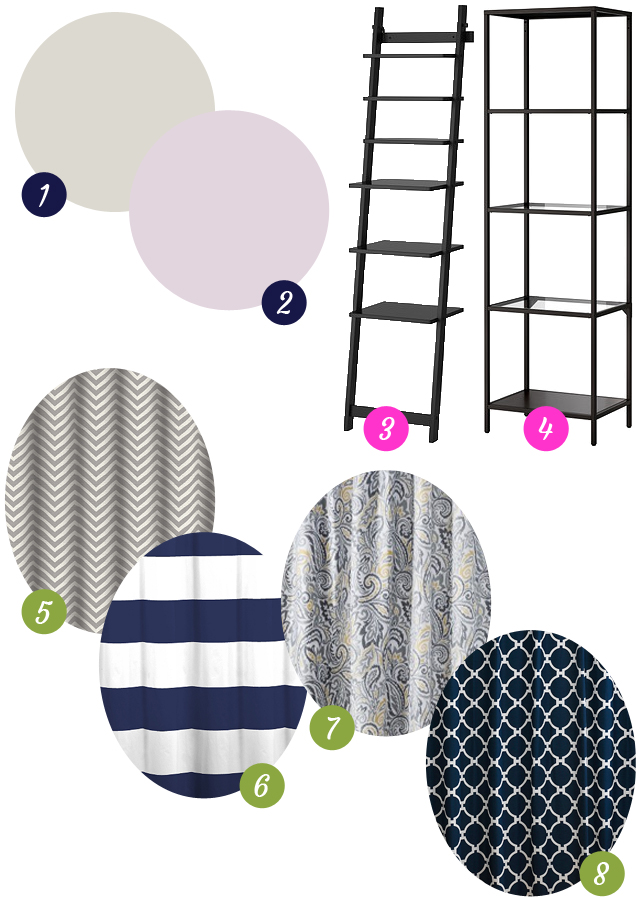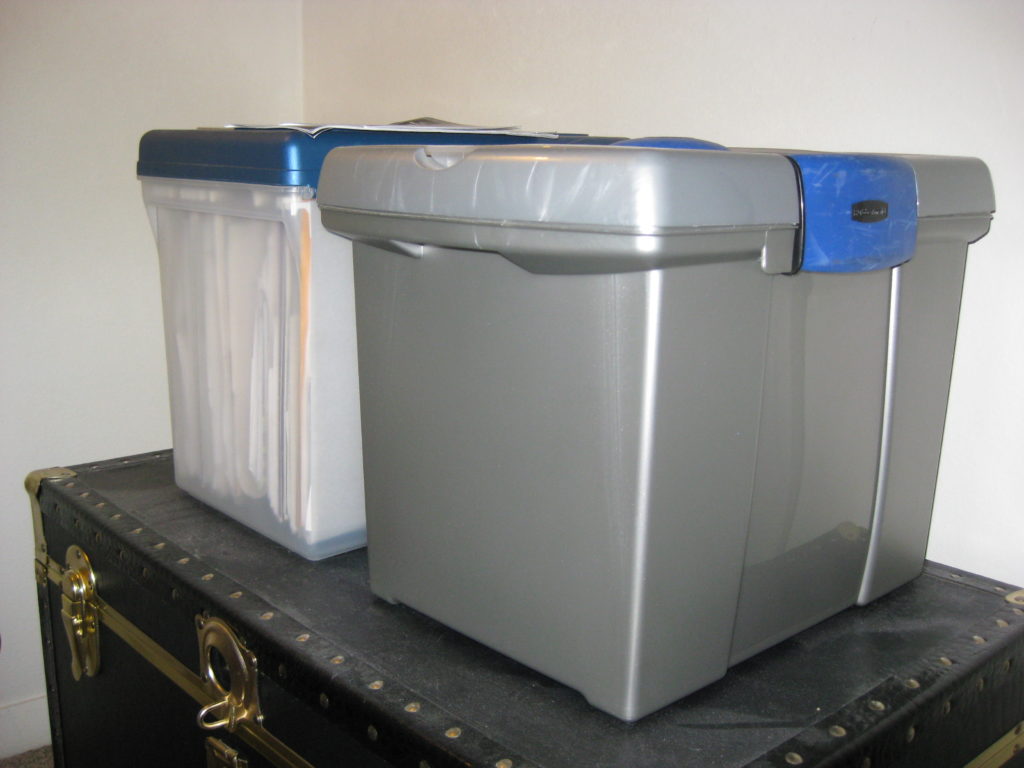How much paper do you keep at home? Do you diligently recycle flyers and shred credit offers, or do you find receipts constantly piling up on end tables, nightstands, and the kitchen counter? Do you keep just seven years of personal tax documents, destroying the oldest return each year after you file a new one, or do you still have pay stubs and W-2s from a part-time college job almost 10 years ago? Do you keep a log of car maintenance, or do you rely on a heap of invoices from every oil change and tire replacement to keep track of what you’ve done and what you haven’t?
Since I’m writing about it, you can probably guess which boat I’m in. I’ve got it all. I have pounds of paper of every conceivable kind. Fortunately, I haven’t had too much trouble keeping it organized: most of it is neatly sorted into labeled hanging file folders, although some of it inevitably collects on clipboards and in baskets around the apartment. Unfortunately, I’ve taken an overly zealous approach to saving things since I moved out and got married in 2009, which means I have whole folders full of papers that I don’t really need to keep.
Then about a month ago, I started a new job and got my own office for the first time in my working life. I was told that it had been cleaned out before I arrived, but I quickly discovered that this was not the case. The woman I inherited it from, who had been with the company about 10 years and quit a couple months before I came on, had an attachment to paper records coupled with a complete lack of an organizational system. I spent the first two weeks just wading through shelves and drawers jammed full of manila folders, opened envelopes, and scraps with notes written on them. (I also found personal items like nail files, open packets of water flavoring, and partially used lip gloss and perfume—eww!—but that’s neither here nor there.)
Attempting to sort through someone else’s work clutter and general detritus cast my own paper situation in stark relief. Faced with a mountain of paper—some of it half a decade old—it’s hard to know what, if anything, is important. I realized as I never had before that the longer I wait to do it, the longer and more unpleasant it will be to do. Plus, I’m not planning to live in this apartment forever, so at the very least I’d like to avoid hauling around unnecessary documents (again). Paper’s heavy!
Breaking the project down into more manageable tasks helped, and I accomplished a lot in a couple of hours the course of a week. Here are the steps I took:
1. Find a large, clear surface and round up documents. When I want to spread out, I prefer to work on the floor, but if your dining table or desk is large enough and clean enough, more power to you! You could even use your bed, as long as it’s made. If you keep things in a stationary file cabinet, it’s probably easiest to stay in whatever room is closest to it. Once you’ve got a safe place to make a mess, grab the accordion folder, banker’s box, or hanging files that keep your important papers, then gather any unsorted mail, notes posted on the fridge, and scrap papers on the desk.
2. Designate three piles: keep, shred, and toss.
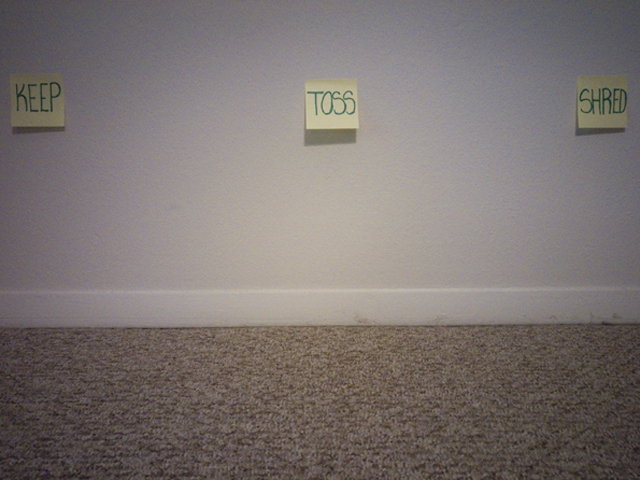
I labeled my piles, because I wanted to be 100% certain I didn’t lose track of which pile was which halfway through the exercise, especially if I got interrupted unexpectedly; you’re not obligated to stick Post-It notes to your wall like I did.
Individual papers went into the keep pile if I definitely needed to keep them; folders went into the keep pile if I knew or suspected there was at least one important paper in them. When in doubt, send it to the keep pile—you can (and probably should) do a second review, so putting it here doesn’t mean you’ve absolutely committed to keeping something for ever and ever. Sensitive documents that I didn’t need to keep went into the shred pile; non-sensitive documents went into the toss pile.
Not sure what you should keep and what you should dispose of? Me neither. That’s how I ended up in this situation. Lucky for you and me, Consumer Reports has a handy guide for what documents to keep and how long to keep them, the IRS has a guide for how long to keep tax documents, and House Logic has a more detailed rundown tax- and investment-related documents you’ll want to keep, for how long, and why you might need them. Don’t forget to check with your bank/credit union, insurance carriers, etc. for more specific information, as their requirements may differ from the general guidelines provided elsewhere.
Once I had permission to get rid of things, this…
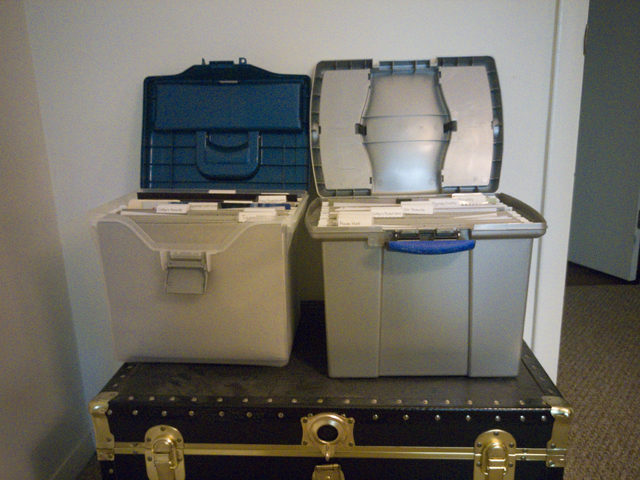
…quickly turned into this:
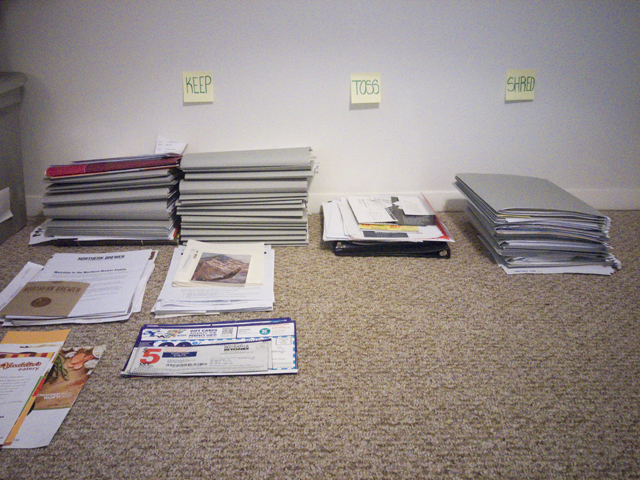
3. Recycle the toss pile, and savor a little (or a lot) of shredding. A couple of years ago we bought a seven-sheet cross-cut shredder designed for home use for about $40, and we don’t regret the expense. It shreds plastic cards and staples no problem, which is a nice plus (and pretty common in consumer shredders these days). The shredder can overheat if used for a large amount of shredding at once, but shredding in smaller batches with short breaks in-between helps, and letting the device rest for 30 minutes if it stops working always solves the problem. If you don’t have a shredder, find out if your workplace, your bank, or your city has shredding events. While not as convenient as home shredding, they usually have only have minimal requirements (like how much each person can drop off or how it should be delivered) and they’re often free.
I’m going to be 100% honest: I optimistically thought that I could knock out this task in an evening or two of dedicated shredding. I grossly underestimated how much there was to do and overestimated how sturdy our little shredder is. Don’t get me wrong, it fought like a champ. But I tripped the circuit on the motor every single time I sat down to shred. The task definitely dragged on, but I kept reminding myself how much easier it would be moving forward if I created a streamlined system once and for all.
In case you think your own paper Everest is insurmountable, or you just want the satisfaction of knowing that there’s someone out there as badly off—or worse—than you, let me present my own wood pulp behemoth:
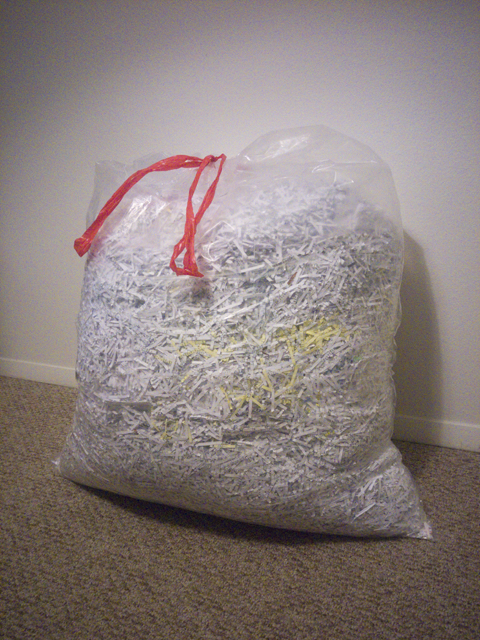
That’s not a kitchen trash bag; that’s a lawn-and-leaf bag. It weighs 13 pounds. It doesn’t even include the stacks and stacks of things that went straight into the recycling bin.
4. Organize what’s left. Actually, pat yourself on the back first, because at this point you definitely deserve it. Then, take a look at what you’ve decided to save, and assess whether your current storage solution is working. I had no complaints with my hanging file folders inside a portable plastic file box, so I decided to stick with them. You might decide that you’d rather switch to an accordion file, a filing cabinet, or some other solution. You might consider re-purposing an unused or under-used storage solution you already have. If you don’t have something like that, now’s the time to make a list of the things you need for your ideal storage system so that you can start shopping around.
I decided to replace my handwritten labels with nice, neat typed labels. I didn’t do anything fancy like color-code them but you certainly could—maybe as a reminder of how often they need to be cleaned out? I used this opportunity to do a second review of everything, which allowed me to consolidate some files (like all of my academic records) and separate others (vehicle financing and property taxes versus vehicle maintenance records). I was able to shred a couple more small trash cans’ worth of unneeded documents as a result.
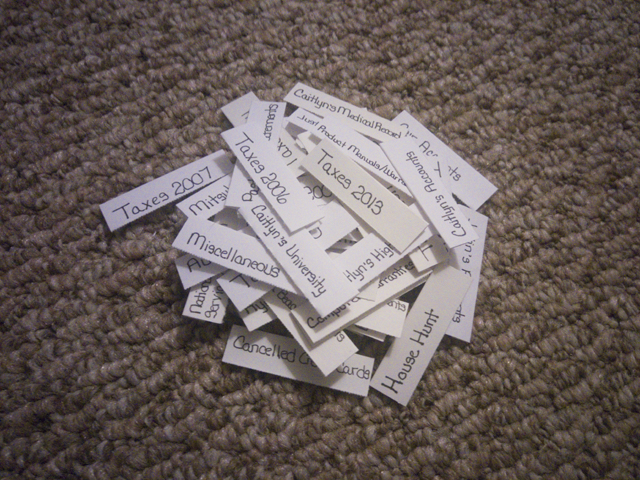
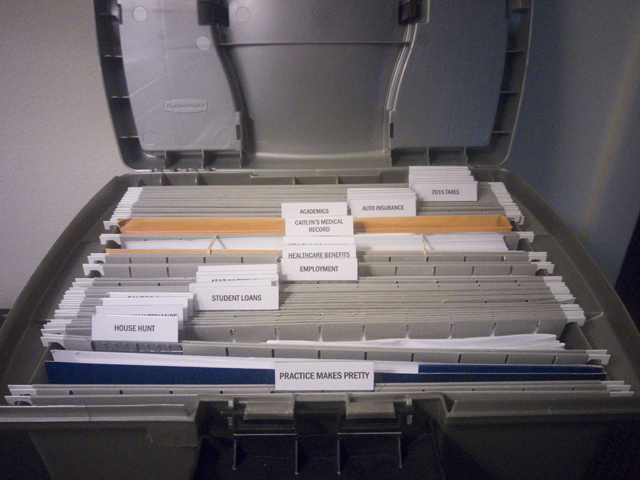
I moved all of our product manuals and warranty documents out of one overstuffed folder and put them into sheet protectors, organized by room, in a three-ring binder designated “home stuff.” It’s not a perfect solution yet, since the sheet protectors aren’t designed for multiple thick booklets and the binder itself is too small, so I’d eventually like to get a beefier binder with envelope-style pockets so that nothing slips out of the top.
Finally, I stole borrowed a page from Sherry Petersik’s book and bought a little notebook for $5.99 that contains a mini accordion file on one side and a notepad on the other for organizing coupons. I made a list of the coupons I have and their expiration dates before sliding them into the pockets and tossing the whole shebang into my purse. As I use the coupons (or find that they’ve expired) I’ll cross them off the list. If/when I eventually run out of paper, I can just glue in a new pad.
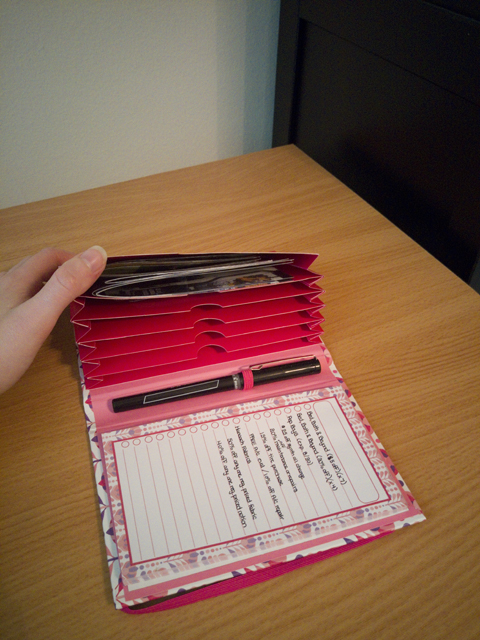
5. Optional (but highly recommended): Vacuum! Seriously, I did all of my shredding in our office and still ended up tracking little bits of paper all over the place.
When all is said and done, to the casual observer it probably doesn’t look like anything has changed. But after thinking hard about whether I really need each and every sheet, it’s a lot easier to assess my mail and decide what needs to stay permanently, what needs to hang around only temporarily, and what can go straight to the bin. I expect to accumulate paper at a much less alarming rate.
So, are you motivated to clean out your hard copy files? Have any suggestions to make my system even better?


